From Tickle Me Elmo to Big Hugs Elmo: nearly two decades of Christmas toy dominance
Christmas time is Elmo time. The lovable red monster from Sesame Street has been one of the most popular gifts in the US nearly every year since 1996. And his dominance reveals a lot about the state of the American toy industry.
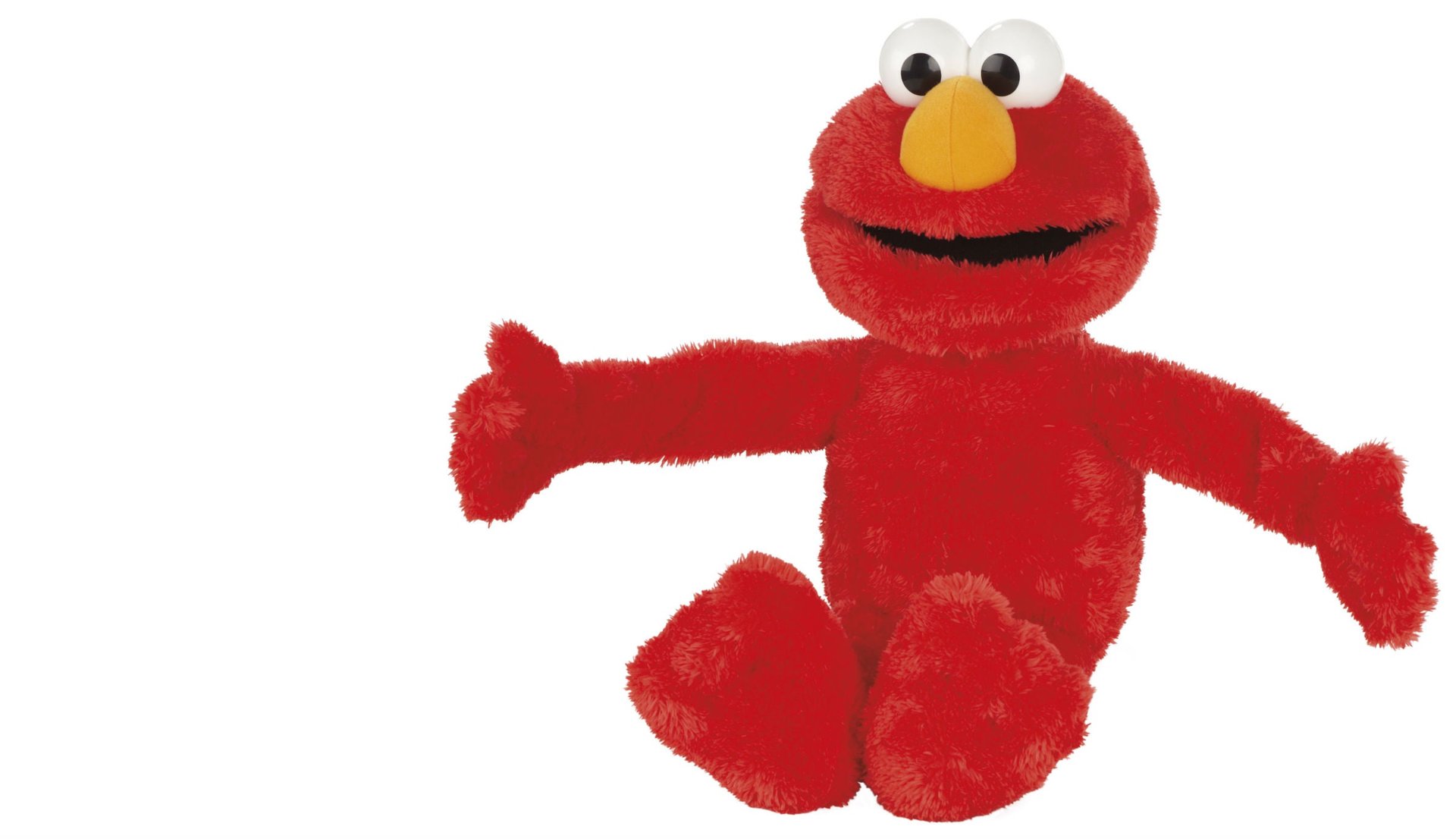

Christmas time is Elmo time. The lovable red monster from Sesame Street has been one of the most popular gifts in the US nearly every year since 1996. And his dominance reveals a lot about the state of the American toy industry.
Each year’s Elmo is a different interactive incarnation. The latest, Big Hugs Elmo, has been declared one of this year’s hottest toys on every list known to US moms: Toys R Us’s, Target’s, etc. It follows in the steps of, to name just a few, Rock ‘n Roll Elmo, Chicken Dance Elmo, Hokey Pokey Elmo, TMX Elmo, Let’s Rock Elmo, and the bestselling Elmo of all time, Tickle Me Elmo.
But while Elmo’s toy franchise is formidable, his popularity has as much to do with the risk-averse nature of retailers as it does with actual demand for furry red dolls. “Retailers only buy things that have proven to sell,” says Sean McGowan, senior analyst at Needham and Company. “And Elmo sells.”
Elmo’s reliability around Christmas is something of a self-fulling prophecy. Every year, big stores stock up on the latest version because it was a bestseller in prior years. But what makes it a bestseller is that the stores decide to carry it in the first place.
It wasn’t always thus, though.
It all started with Tickle Me Elmo
When Tyco Toys released the original—and now legendary—Tickle Me Elmo back in the fall of 1996, few anticipated how intensely children would come to fawn over it or its now seemingly endless lineage of relatives. Tyco certainly didn’t—the company agreed to be bought out by mammoth toymaker Mattel before the holiday season even began that year.
Tickle Me Elmo wasn’t the first Elmo doll by any means. It wasn’t even the first interactive one. But it laughed when you squeezed its tummy, and something about that made children go crazy. “As just about anyone who spent last week on planet Earth knows, Tyco Toys Inc. has shipped over a million Tickle Me Elmo dolls, and stores simply cannot keep them in stock,” the New York Times noted that December. Caught unprepared, Tyco and toy retailers alike grossly undersupplied the market.
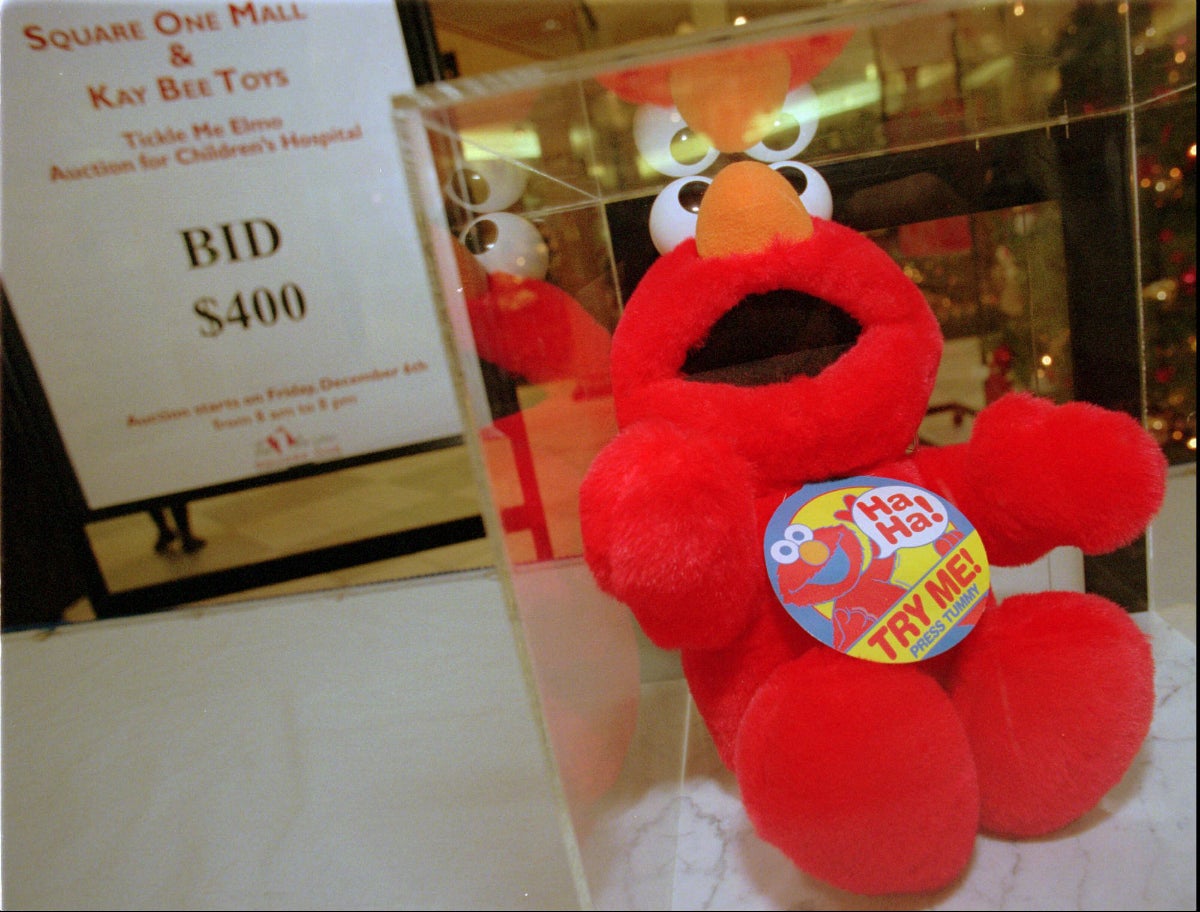
“The first year caught everyone by surprise,” McGowan said. “No one wanted to be caught by surprise after that.” The very next year, Mattel sold seven times as many Tickle Me Elmos as it did the year before, he says.
In 1998, Walk ‘N’ Talk Elmo—part of a Walk ‘N’ Talk Pals line, along with Elmo’s Sesame Street colleagues Cookie Monster and Big Bird—landed on top toy lists before hitting the shelves that holiday season.
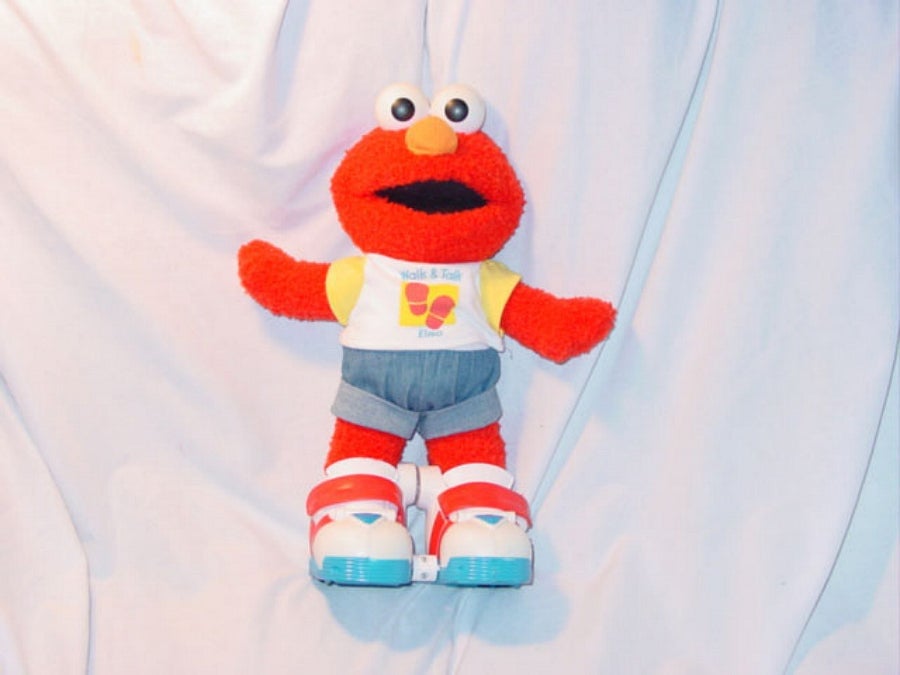
It was the same for Rock N Roll Elmo in 1999…
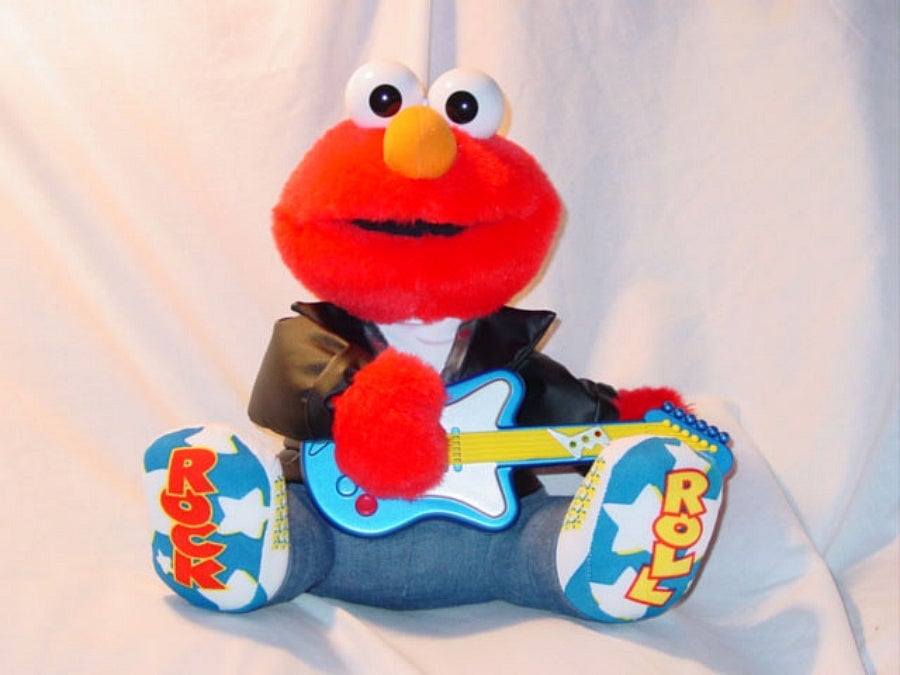
Let’s Pretend Elmo in 2000…
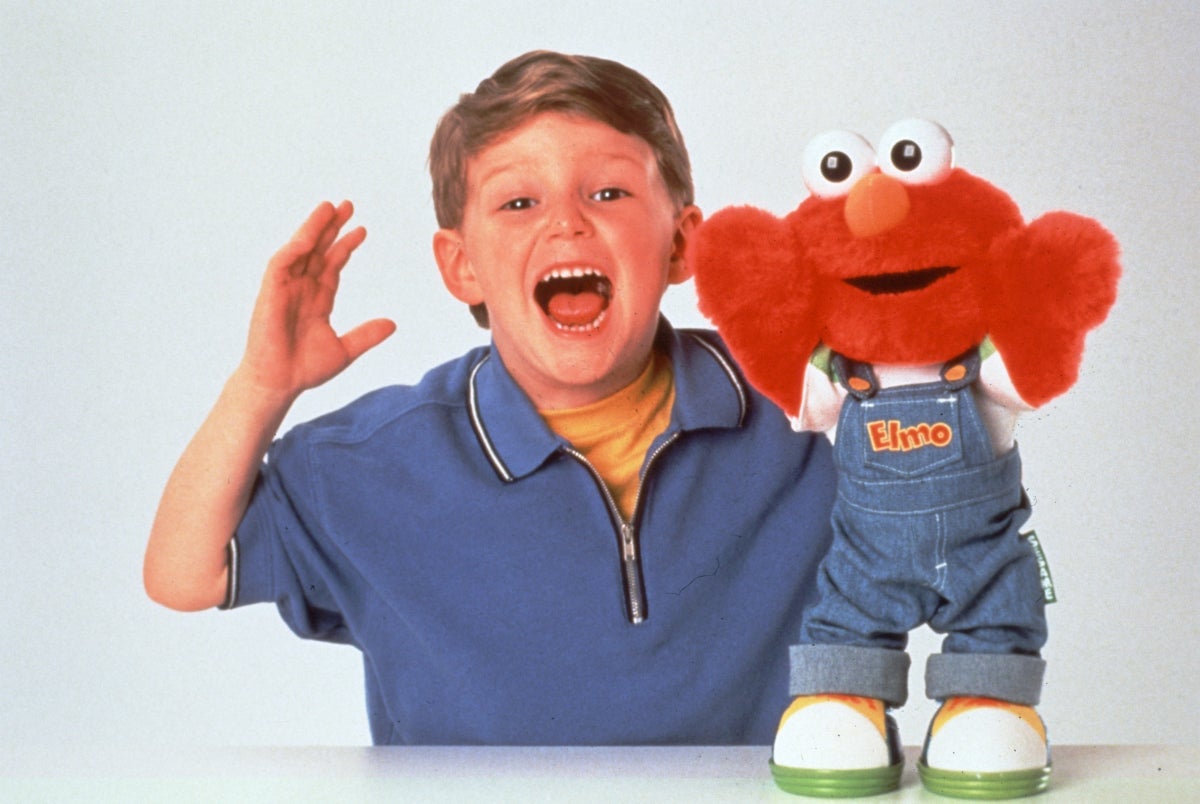
Tickle Me Elmo Surprise in 2001…
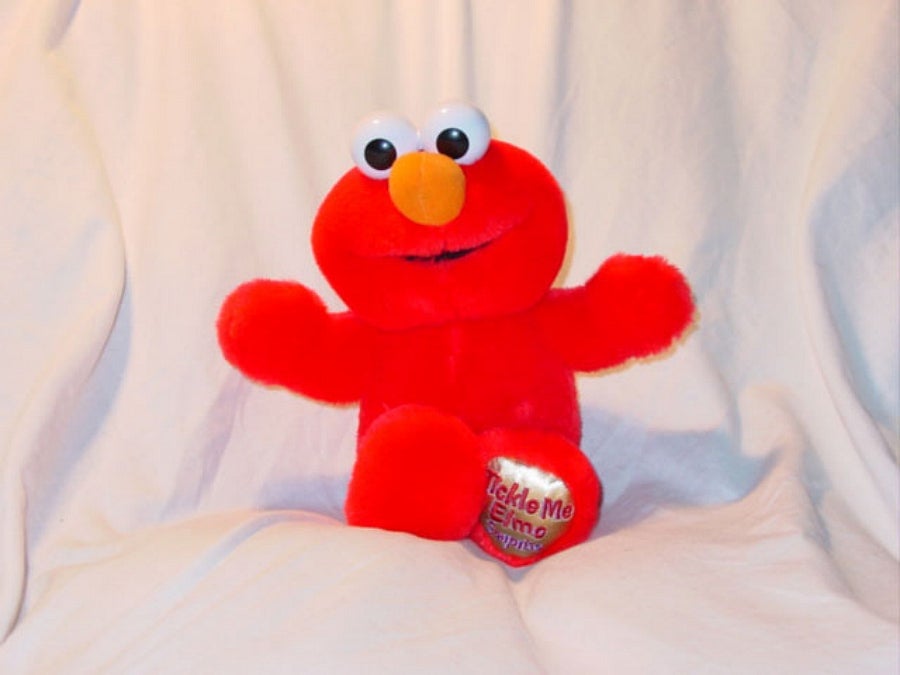
Chicken Dance Elmo in 2002…
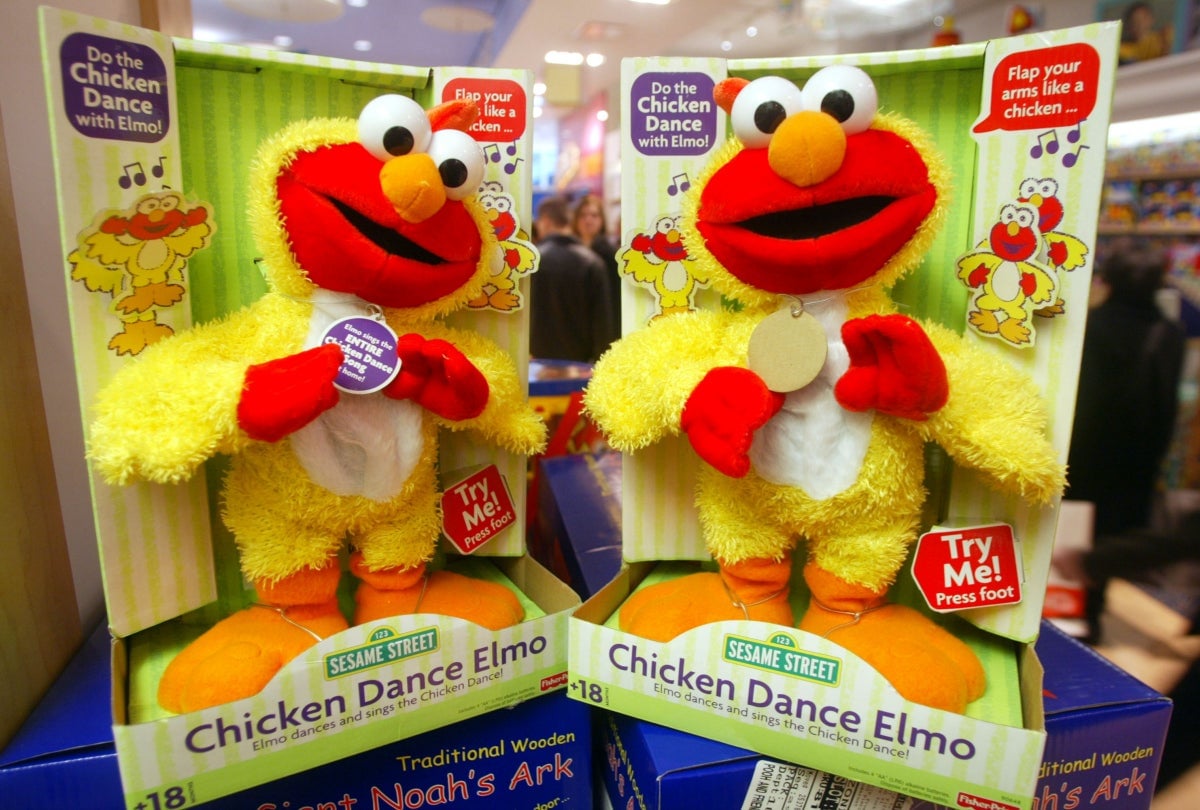
Hokey Pokey Elmo in 2003…
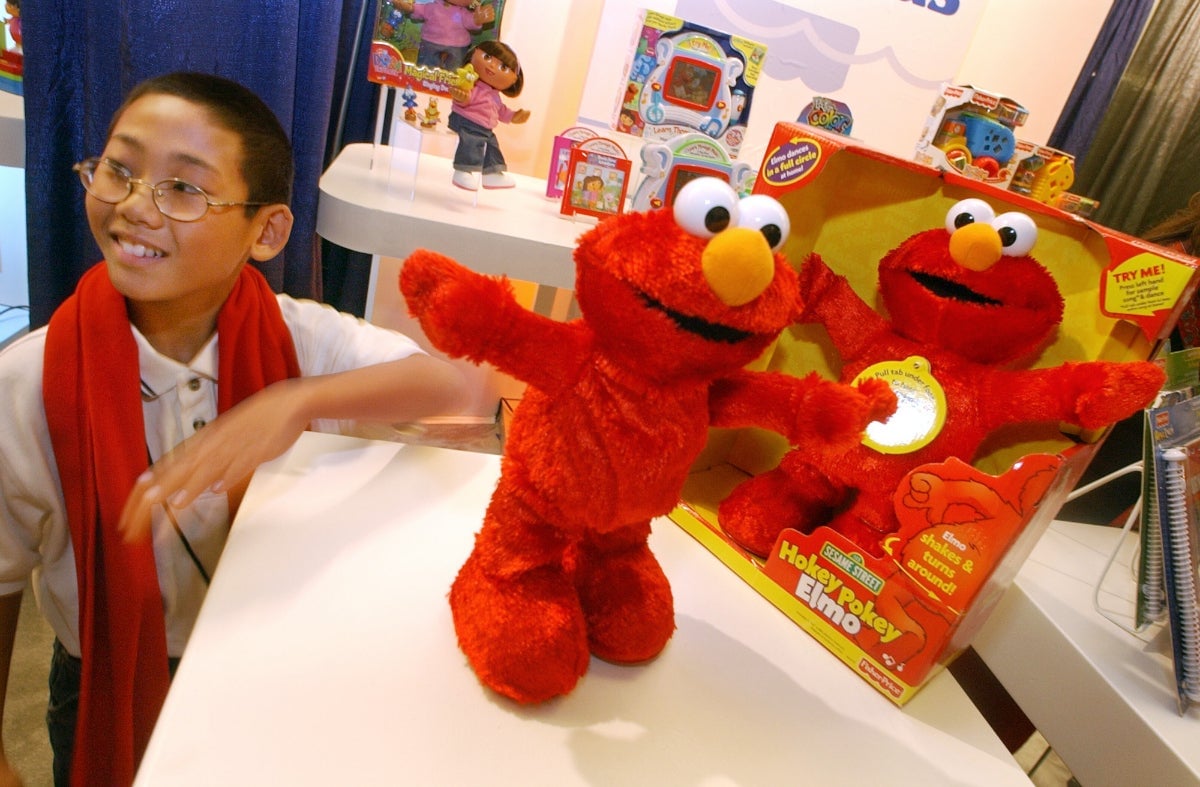
E-L-M-O in 2004…
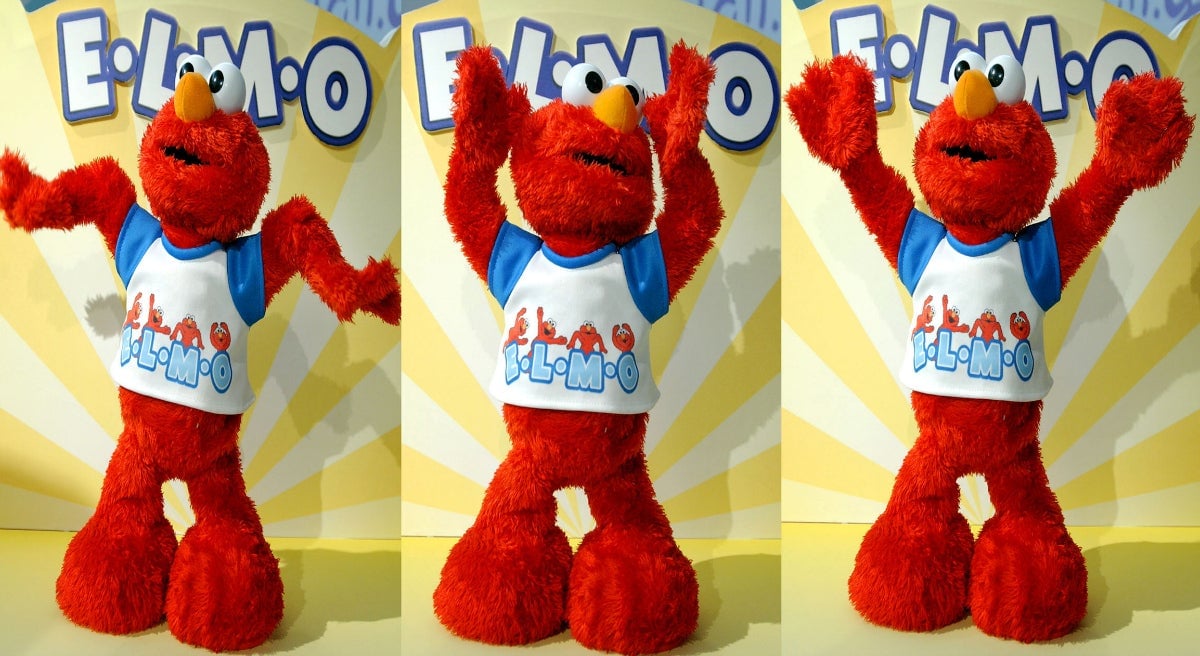
… and SHOUT Elmo in 2005.
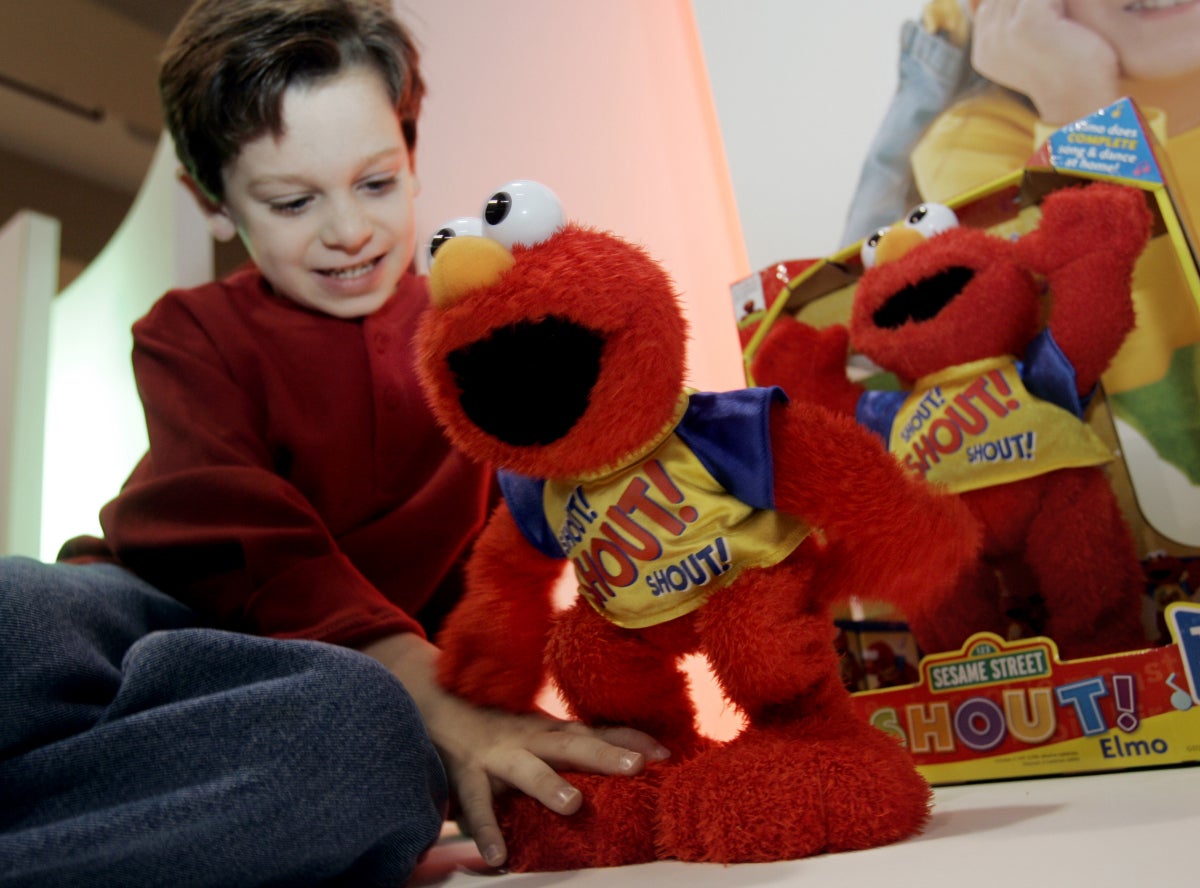
In 2006, after 10 consecutive years of successful Elmo sales, Mattel decided to pull a stunt. The company announced that that year’s toy would commemorate the original Tickle Me Elmo doll, but kept its name, functions and novelty a secret. The only image available before the toy’s launch was its silhouette. When the toy was finally released, just in time for the holiday season, it was called TMX Elmo, functioned much like the original Tickle Me Elmo save for incremental stages of laughter—it responded differently the second and third times it was tickled—and it flew off store shelves. There were reports of the doll selling for as much as $5,000. Channeling Tickle Me Elmo had worked. “We said that TMX Elmo would likely be the strongest thing since [Tickle Me Elmo] and it was,” Mattel CEO Robert Eckert said at the time.
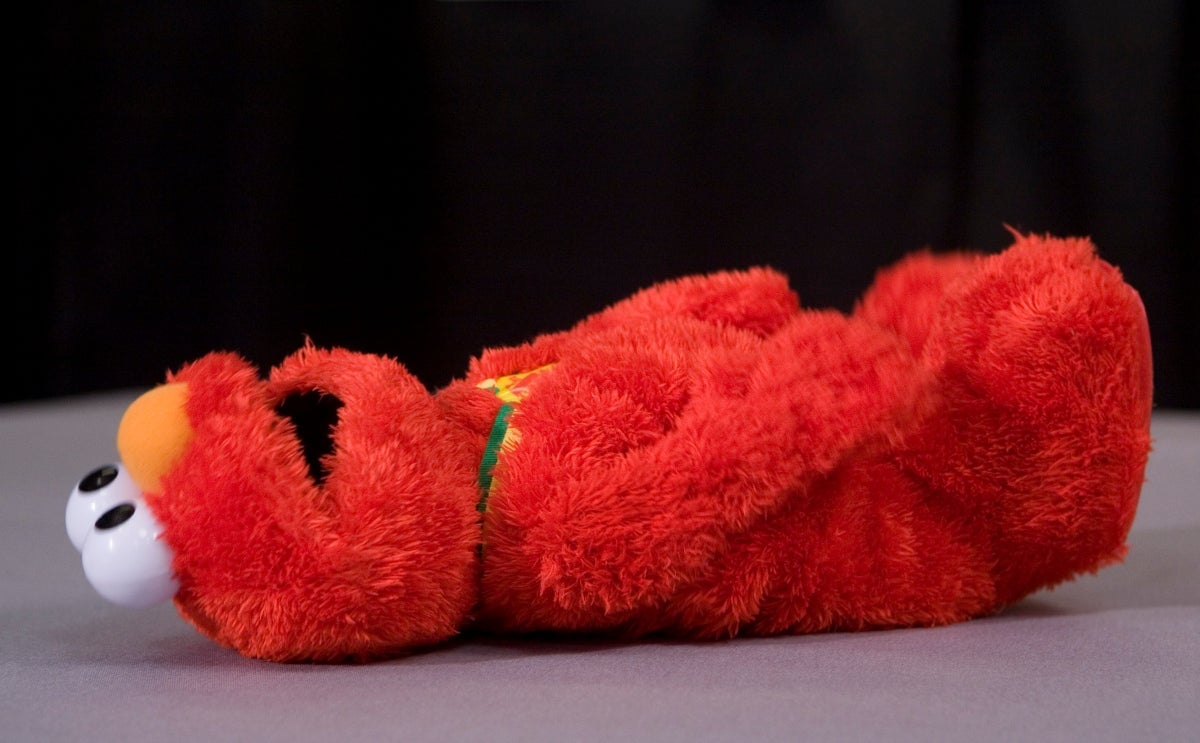
That the Elmos keep selling like, well, Elmos, is especially remarkable given that, regardless of their plethora of names, they’re all much the same. “Talk about a one-trick pony. These Elmos all do one thing, none of which is substantially different,” McGowan told Quartz. But it hasn’t mattered.
In 2008, Mattel launched Elmo Live, which, like some others before it, sings.

In 2009, Mattel broke with tradition by not bringing out an actual Elmo doll. Instead it brought out Elmo Tickle Hands. These are and do exactly what their name suggests.
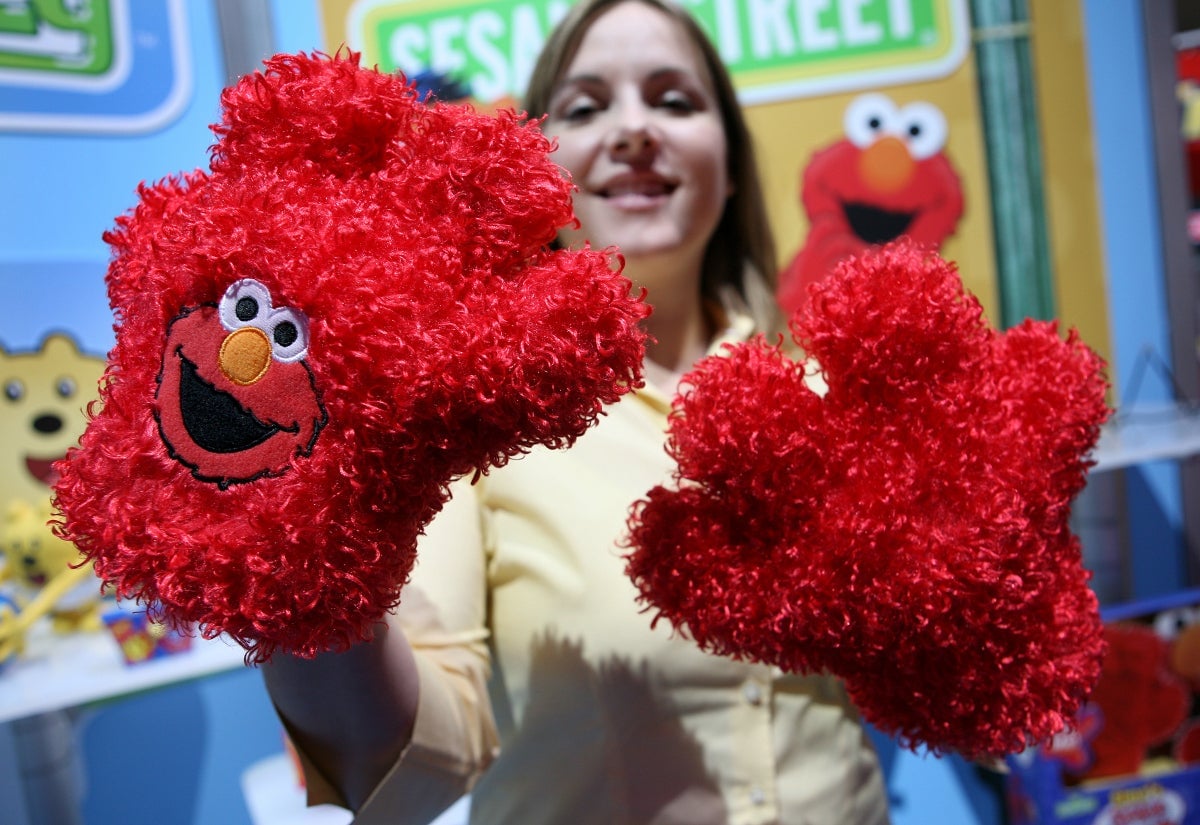
In late 2009, Sesame Workshop, which owns the rights to Sesame Street, announced that it was going to shift the manufacturing license from Mattel to rival toy company Hasbro. In 2010, Mattel’s last year at the helm, the company released a new, updated Tickle Me Elmo, which could stand back up after falling into laughter. It was a lazy last hurrah, but still topped holiday toy lists.
In 2011, Hasbro’s first year producing Sesame Street toys, the company released Let’s Rock Elmo, an improved, but near clone of the one released by Mattel back in 1999.
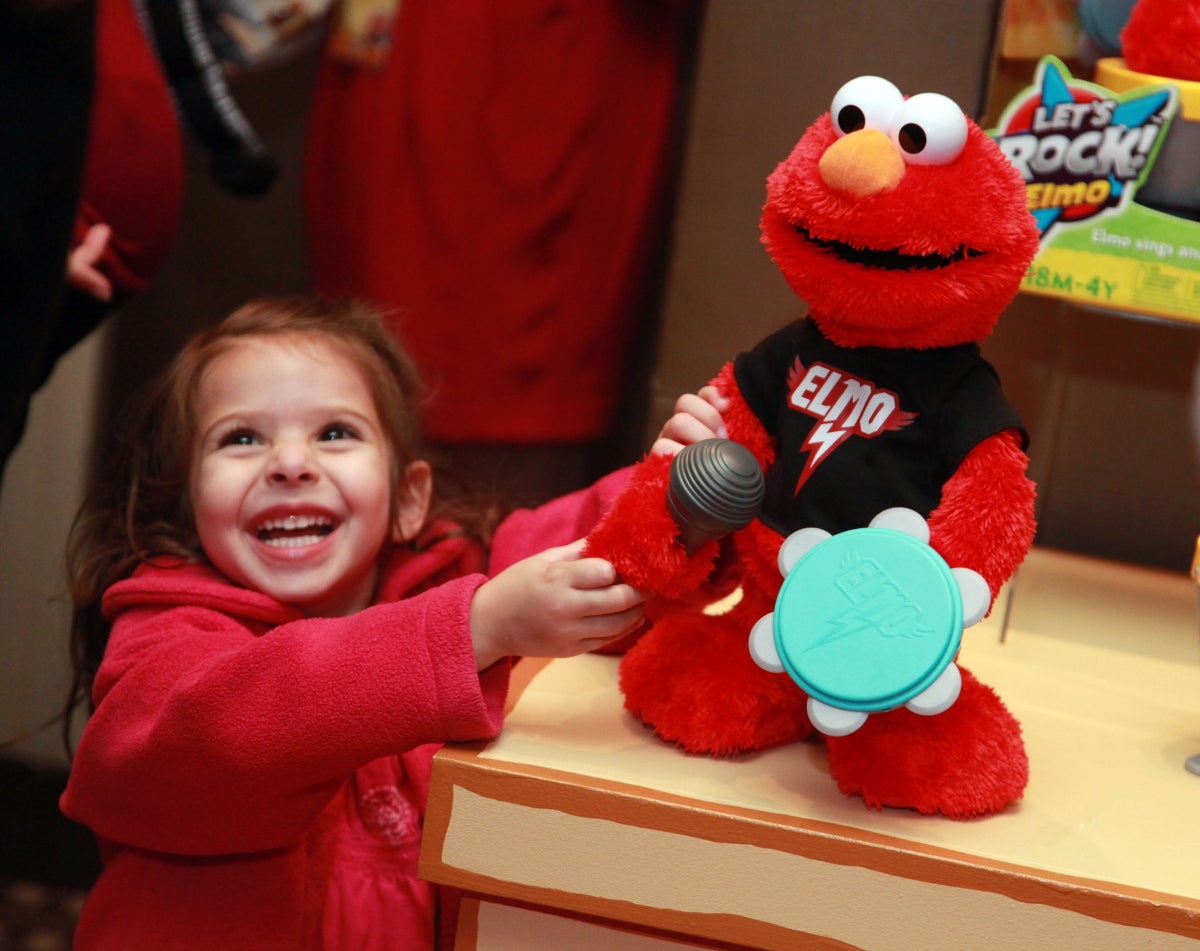
The only serious hiccup happened last year, after Kevin Clash, the former voice of Elmo on Sesame Street, became engulfed in a sex scandal. While a new Elmo toy, LOL Elmo, still hit the shelves, it sold, but not nearly as well.
Why Elmo resonates so deeply with preschoolers first as a character, and second as a toy is hard to pin down. “It could be Elmo’s playable value, or jovial character. What makes preschool toys big is believability and actionability,” senior industry analyst Stephanie Wissink of Piper Jaffray told Quartz. “If anybody says they know why, they’re probably making it up,” McGowan said.
But while Elmo’s appeal to children is real, his appeal to retailers is just as important. Each successive Elmo has helped to build the brand. And good old reliable brands may never have been as important to toy retailers as they are today.
That’s because tablets, game consoles and other electronic gadgets are increasingly eating into traditional toy sales and luring an ever-younger audience. Walmart, Target, Toys R Us and Amazon now control some 70% of the roughly $20-billion-a-year US toy industry, according to Wissink. All of these companies carry traditional toys and new-age electronics alike, meaning that dolls and board games are pitted against iPads and Xboxes. Only the fittest traditional toy brands can survive such battles.
The slow-play of Elmo releases—the fact that the toymakers bring out just one new, big Elmo a year, and usually right before the holidays—has certainly helped. “They come out with about one every year so it concentrates the demand in a single item, and they can put all their marketing and advertising into that single product,” said Wissink. But the key is the overarching brand that toy retailers have helped build and reinforce year after year. What Mattel and, later, Hasbro, likely came to realize is that it doesn’t matter what Elmo is released around Christmas, so much as that an Elmo is released around Christmas. It’s why Mattel sold between $80 and $200 million in Sesame Street merchandise every year it held the license to manufacture it.
This year’s incarnation, Big Hugs Elmo, is in some ways a novel approach. Rather than simply reacting to poking, plucking and string-pulling with a single trick, Elmo now interacts on many and varied levels—he can sing, dance, talk, and, of course, hug. But at the end of the day, he’s just another Elmo. And that’s why he’ll sell.
Eckert, the Mattel CEO, may have said it best back in 2008: “While I don’t always have the best track record in predicting the hot toy for the season, when I stick with Elmo I do pretty well.” Five years later, Elmo’s still a pretty good bet.